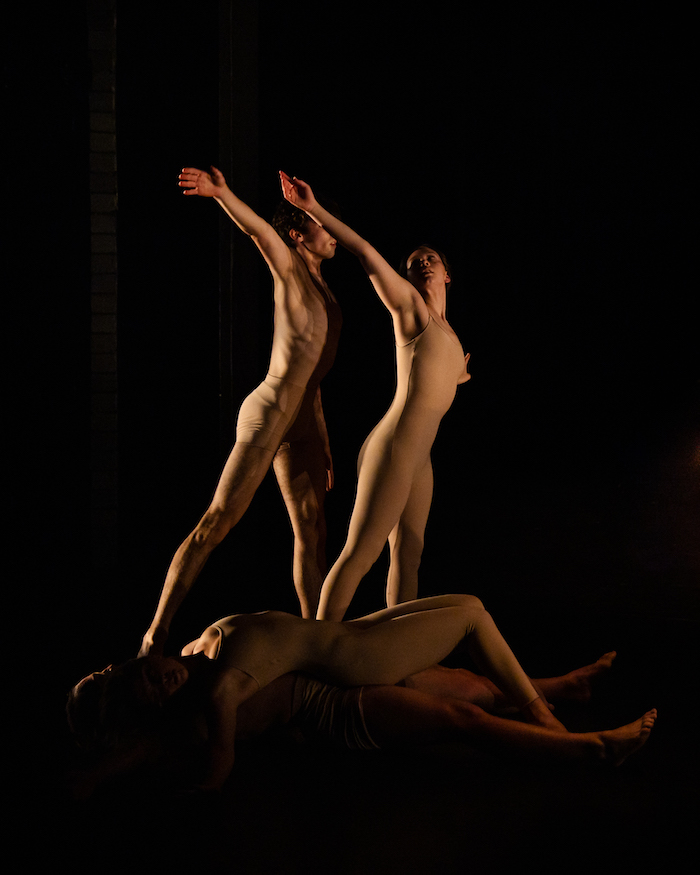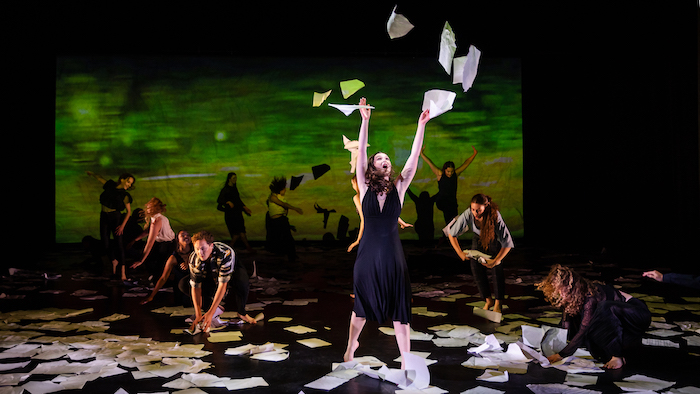Icon: An Extraordinary Event is a fitting tribute to the life and work of Pina Bausch, writes Kim Balfour.
Extraordinary tribute to dance icon
12 November 2022
- Reading time • 7 minutesDance
More like this
- Dance dreams are made of this
- Straight talk reveals resilience behind anguish
- Creative fusion delivers dreamy dynamic
Icon: An Extraordinary Event, WAAPA Dance ·
Geoff Gibbs Theatre, 11 November 2022 ·
Icon: An Extraordinary Event is a tribute to the influential German dancer and choreographer Pina Bausch, with WAAPA second and third year dance students and LINK Dance Company performers presenting three works that celebrate and explore Bausch’s choreography, life and legacy.
This is a treat for Perth audiences – it is the first time Bausch’s Tannhäuser Bacchanal has been performed outside Germany. Combining it in a program with works from iconic Australian choreographer Meryl Tankard and WAAPA’s own Michael Whaites assures an extraordinary evening.
Bausch, who died in 2009, is one of the most widely recognised names in dance. It’s difficult to overstate her influence on choreography and how we appreciate dance as an artform. Bausch’s works follow a continuum of artistic progression, with Tannhäuser Bacchanal believed to be a precursor to her explosively sublime The Rite of Spring.
The comparisons of Tannhäuser Bacchanal to Rite of Spring make sense, even though the former is abstract and without the narrative of the latter. Aesthetically and sensorially, both works are instilled with primal, preternatural movements, where dancers seamlessly glide with heavy, lyrical earth-bound undulations and pulsations. Bausch once said, “I am not interested in how people move, but in what moves them”. To this end, Marigia Maggipinto and Ophelia Young, both former Tanztheater Wuppertal dancers, have done a wonderful job of recreating the mood of Tannhäuser Bacchanal for WAAPA.

Tannhäuser Bacchanal is performed by 23 dancers in simple, flesh-coloured unitards illuminated by minimalist side lighting, to Wagner’s arresting romantic score of the same name. Like Igor Stravinsky’s Rite of Spring, which caused audiences to riot at its 1913 premiere, Wagner’s Tannhäuser Bacchanal has an inherent restlessness and melodrama, which emphasises the physical tension on stage. Tannhäuser Bacchanal has a short, sharp, melodramatic jolt that awakens the senses.
Tankard’s work Chants de Mariage, created in 1991-92, is performed by a cast of women, and explores themes of marriage, desire, regret, sadness, body image and self-worth as framed by and expressed though toxic patriarchal messaging. Chants de Mariage initially disarms its audience with humour; the first image we see is an animated bride, who looks like she has escaped from the top of wedding cake, and whose comic robotic movements suggest the deterministic and ritualistic nature of marriage.
This is followed by spoken word pieces that hilariously lampoon often hollow affirmations of love and desire. The work eventually takes on a darker humour as the performers recite their insecurities, from body image to more mundane concerns. Their mantra is, “I can’t…”. The mood and tone of the work follows a full circle of emotions and disclosures, revealing conflicted, insecure internal worlds.
Chants de Mariage is a striking and revealing exploration of how women, specifically within the institution of marriage, seek validation and self-esteem in patriarchal rituals and the distorted metrics of self-worth that generate them.
Aesthetically, its tone has an exquisitely dark, brooding, gothic beauty. Folk songs, long white dresses, grey stone walls and imposing edifices create a striking and often imposing atmosphere. The choreography is gorgeous, and the Bausch influences apparent, which isn’t surprising given the time Bausch and Tankard spent together during Tankard’s time as a soloist with Bausch’s Tanztheater Wuppertal. Just as Bausch asked her dancers to delve into their experiences, provoking the expression of internal states, so too do Tankard’s works ooze primal, organic, internal emotional landscapes, with screams of “Why? Who did this to me?” as the performers crawl, fall and undulate to express anger, rage and confusion, realising they’ve somehow been deceived.
Michael Whaites, artistic director of LINK Dance Company, provides the last work of the evening. Things That Remain is a meta choreographic work, a representation of Bausch’s life, work and legacy. The movement, sound, and imagery work on various levels related to memory, its absence, precariousness and lost legacies. The work poses questions about what remains from a life such as Bausch’s and how we do or don’t preserve a creative legacy.

Whaites created Things That Remain, a gentle piece devised around nostalgia and remembrance, soon after Bausch’s death. In a sense it is a living archive of Bausch’s life and work, filled with archival film and images acting as a literal backdrop to the action onstage.
Things That Remain is set among hundreds of pages scattered across the stage, some falling from above. The dancers move among the strewn pages, seemingly oblivious to their value. The solo and group sequences are performed well, along with light-hearted and whimsical spoken word and physical antics. Things That Remain is an ambient piece, and is received much like someone might experience a dream during a late afternoon nap – its disparate parts comprising an uncanny, meditative whole.
I would recommend this program on the strength of Tankard’s Chants de Mariage alone. But in its entirety, Icon: An Extraordinary Event provides an impactful, emotional and reflective evening of dance dedicated to Pina Bausch, and it is danced beautifully and skilfully by the WAAPA students.
Icon: An Extraordinary Event continues until 17 November 2022
Pictured top: Pina Bausch’s ‘Tannhäuser Bacchanal’ is characterised by primal, preternatural movements, rendered skilfully by the WAAPA dance students. Photo by Stephen Heath
See more of Seesaw’s recent dance performance reviews
Like what you're reading? Support Seesaw.






